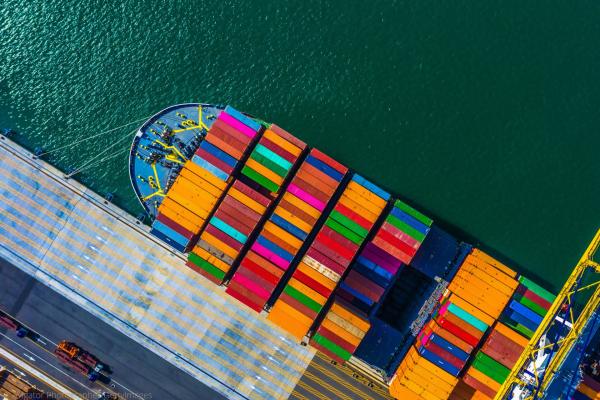Overview
Sewage sludge is a mud-like residue resulting from wastewater treatment. It can contain contaminants such as heavy metals or other chemicals, or pathogens. It also contains valuable organic matter and nutrients such as nitrogen and phosphorus, and can therefore be very useful as a fertiliser or soil improver.
Background
The Directive on sewage sludge aim to ensure that the surface and ground water is not impaired when sludge is used in agriculture. It covers:
- how farmers can use sewage sludge as a fertiliser
- the sampling and analysis of sludge and soils
- keeping detailed records for sludge quantities produced and used in agriculture
- the type of treatment and sites where sludge is used
- sludge composition and properties
Normally, sludge must be treated to reduce its fermentability and the health risks resulting from its use. In some EU countries, untreated sludge can be used in farming if it is injected or worked into the soil. In certain cases, sludge cannot be used at all. This includes
- on soil in which fruit and vegetable crops are grown, except for fruit trees
- on grassland or forage land that will be grazed by animals or harvested in the next three weeks
less than ten months before fruit and vegetable crops are to be harvested, when the crops are in direct contact with the soil and eaten raw
Objectives
The aims of the Sewage Sludge Directive are
- to protect humans, animals, plants and the environment by ensuring that heavy metals in soil and sludge do not exceed set limits
- to increase the amount of sewage sludge used in agriculture
The Directive also
- sets limits for the concentration of seven heavy metals in sewage sludge intended for agricultural use and in sludge-treated soils (cadmium, copper, nickel, lead, zinc, mercury, chromium)
- bans the use of sewage sludge that results in concentrations of these heavy metals in soil exceeding these limit values
Law
- Sewage Sludge Directive
- Consolidated version of the Sewage Sludge Directive
- Summary of EU sewage sludge law
- Regulation aligning and streamlining reporting requirements in environmental legislation
- Decision on procedural rules in the field of environmental reporting
- Directive on the treatment of urban wastewater
Evaluation
An evaluation of the Directive was conducted as part of the New Circular Economy Action Plan.
It concluded that the Directive remains relevant but that the set of pollutants which it regulates needs review, notably considering organic compounds, pathogens, pharmaceuticals, and microplastics which are present in sewage sludge. It highlighted the cost-efficiency of sludge use in agriculture, which appears significantly less costly than incineration, the main alternative to its use on farmland. Sludge use in agriculture ties in many dimensions of sustainable development and in the context of zero pollution, climate change, and EU policies of strategic autonomy, there can be synergies and trade-offs between different drivers of choices for sludge management. The importance of flexibility is stressed, also considering that sludge management strongly depends on local conditions.
The evaluation also pointed to a lack of data on sludge use in agriculture and on-going research on the subject.
Supporting information:
Publications
- Technical proposals for selected new fertilising materials under the Fertilising Products Regulation
- End-of-waste criteria for biodegradable waste subjected to biological treatment (compost & digestate): Technical proposals
- Report on the occurrence and levels of selected compounds in European sewage sludge samples
- Environmental, economic and social impacts of the use of sewage sludge on land: Part I , Part II and Part III
- Feasibility study on heavy metals (trace elements) and organic matter content of European soils
- Progress report on trace element and organic matter content of European soils
- Report on organic contaminants in sewage sludge for agriculture use
- Report on the disposal and recycling routes for sewage sludge
- Study on pollutants in urban waste water and sewage sludge
- Evaluation of sludge treatments for pathogen reduction
- 2014 evaluation of the Sewage Sludge Directive
Related links
Main law: Sewage Sludge Directive
Entry into force: 18 June 1986
Related topics: Chemicals Circular economy Nature and biodiversity Waste and recycling Water
Related strategies: Bioeconomy Strategy Circular Economy Action Plan Chemicals strategy for sustainability Farm to Fork Strategy
Related Commission priorities: European Green Deal



